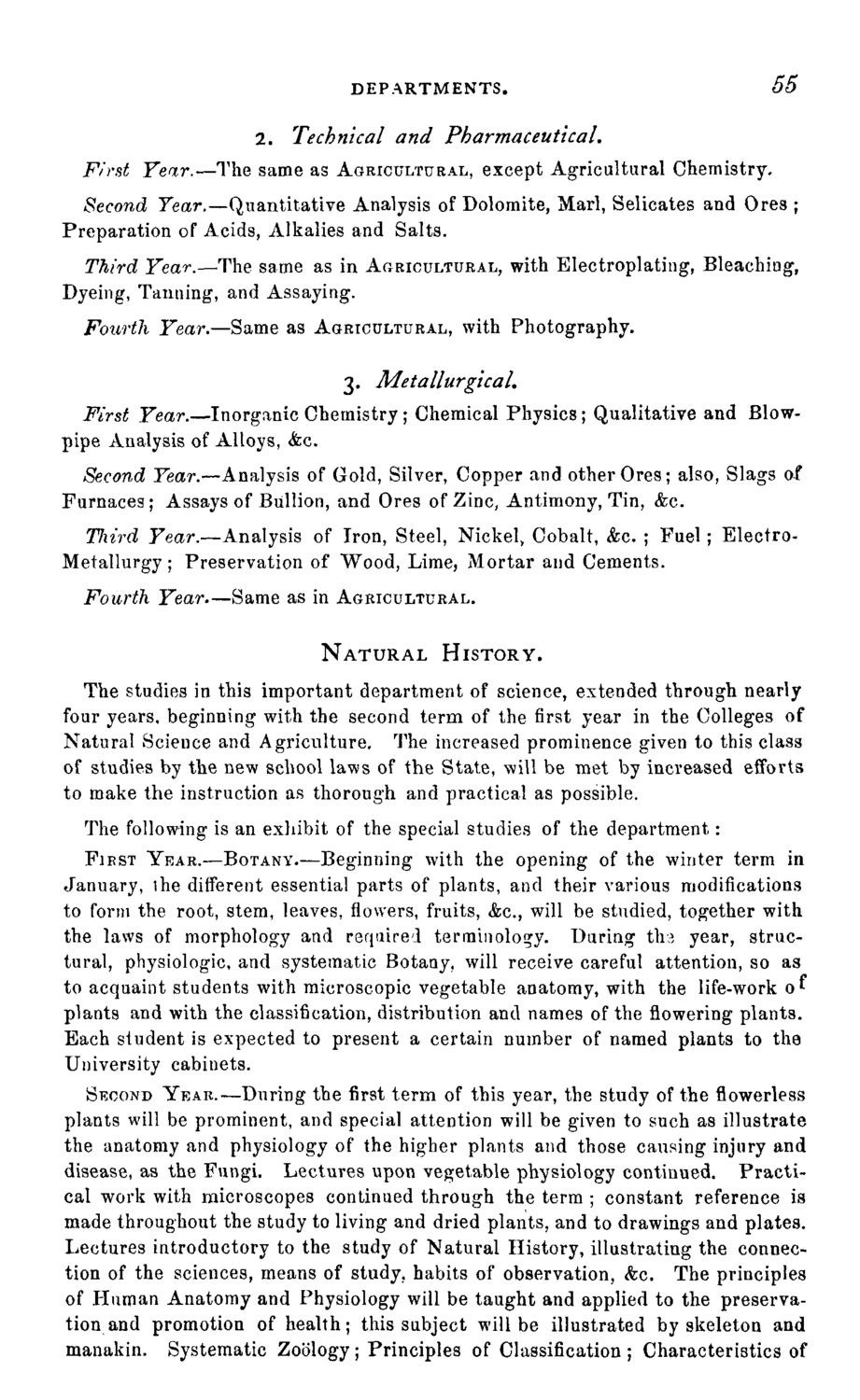| |
| |
Caption: Course Catalog - 1871-1872
This is a reduced-resolution page image for fast online browsing.

EXTRACTED TEXT FROM PAGE:
DEPARTMENTS. 55 2. Technical and Pharmaceutical. First Year.—The same as AGRICULTURAL, except Agricultural Chemistry. Second Year.—Quantitative Analysis of Dolomite, Marl, Selicates and Ores ; Preparation of Acids, Alkalies and Salts. Third Year.—The same as in ARRICULTURAL, with Electroplating, Bleaching, Dyeing, Tanning, and Assaying. Fourth Year.—Same as AGRICULTURAL, with Photography. 3. Metallurgical. First Year.—Inorganic Chemistry ; Chemical Physics; Qualitative and Blowpipe Analysis of Alloys, &c. Second Year.—Analysis of Gold, Silver, Copper and other Ores; also, Slags of Furnaces; Assays of Bullion, and Ores of Zinc, Antimony, Tin, &c. Third Fear.—Analysis of Iron, Steel, Nickel, Cobalt, &c. ; Fuel ; ElectroMetallurgy ; Preservation of Wood, Lime, Mortar and Cements. Fourth Year Same as in AGRICULTURAL. NATURAL HISTORY. The studies in this important department of science, extended through nearly four years, beginning with the second term of the first year in the Colleges of Natural Science and Agriculture. The increased prominence given to this class of studies by the new school laws of the State, will be met by increased efforts to make the instruction as thorough and practical as possible. The following is an exhibit of the special studies of the department: FIRST YEAR.—BOTANY.—Beginning with the opening of the winter term in January, the different essential parts of plants, and their various modifications to form the root, stem, leaves, flowers, fruits, &c, will be studied, together with the laws of morphology and required terminology. During tlu year, structural, physiologic, and systematic Botany, will receive careful attention, so as to acquaint students with microscopic vegetable anatomy, with the life-work o^ plants and with the classification, distribution and names of the flowering plants. Each student is expected to present a certain number of named plants to the University cabinets. SECOND YEAR.—During the first term of this year, the study of the flowerless plants will be prominent, and special attention will be given to such as illustrate the anatomy and physiology of the higher plants and those causing injury and disease, as the Fungi. Lectures upon vegetable physiology continued. Practical work with microscopes continued through the term ; constant reference is made throughout the study to living and dried plants, and to drawings and plates. Lectures introductory to the study of Natural History, illustrating the connection of the sciences, means of study, habits of observation, <fec. The principles of Pluman Anatomy and Physiology will be taught and applied to the preservation and promotion of health; this subject will be illustrated by skeleton and manakin. Systematic Zoology; Principles of Classification ; Characteristics of
| |